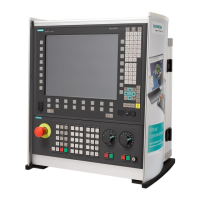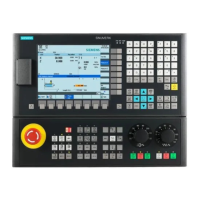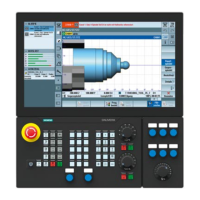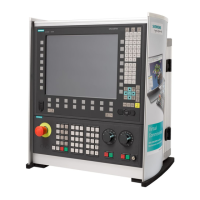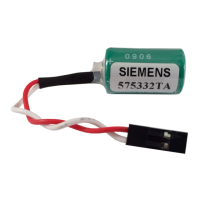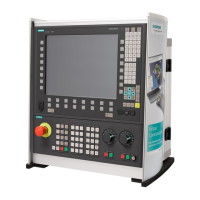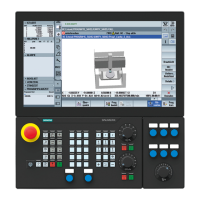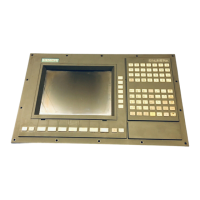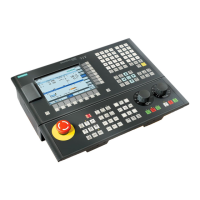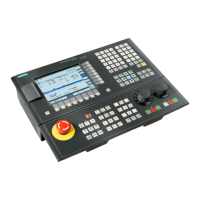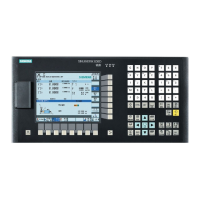Tool offsets
8.18 Tools with a relevant cutting edge length
Fundamentals
8-80 Programming Manual, 10.2004 Edition, 6FC5 298-7AB00-0BP1
/DVWSRVLWLRQRIFXWWLQJHGJHFHQWHUSRLQW
RQWKHFRQWRXU6:DQGKLJKHU
3URJUDPPHGUHWUDFWLRQEORFN
%ORFNZLWKRXW
LQWHUVHFWLRQZLWK
SUHYLRXVEORFN
7RROHGJHUHIHUHQFHSRLQW
&XWWLQJHGJHFHQWHUSRLQW
7RROHQGSRVLWLRQ
7RROHGJHUHIHUHQFHSRLQW
&HQWHUSRLQWSDWK
/DVWSRVLWLRQRIFXWWLQJHGJHFHQWHUSRLQW
• In circle blocks and in motion blocks containing rational polynomials with a denominator
degree > 4, it is not permitted to change a tool with active tool radius compensation in
cases where the distance between the tool edge center point and the tool edge reference
point changes. With other types of interpolation, it is now possible to change when a
transformation is active (e.g., Transmit).
• For tool radius compensation with variable tool orientation, the transformation from the
tool edge reference point to the tool edge center point can no longer be performed by
means of a simple zero offset. Tools with a relevant tool point direction are therefore not
permitted for 3D peripheral milling (an alarm is output).
Note
The subject is irrelevant with respect to face milling as only defined tool types without
relevant tool point direction are permitted for this operation anyway. (A tool with a type,
which has not been explicitly approved, is treated as a ball end mill with the specified
radius. A tool point direction parameter is ignored).

